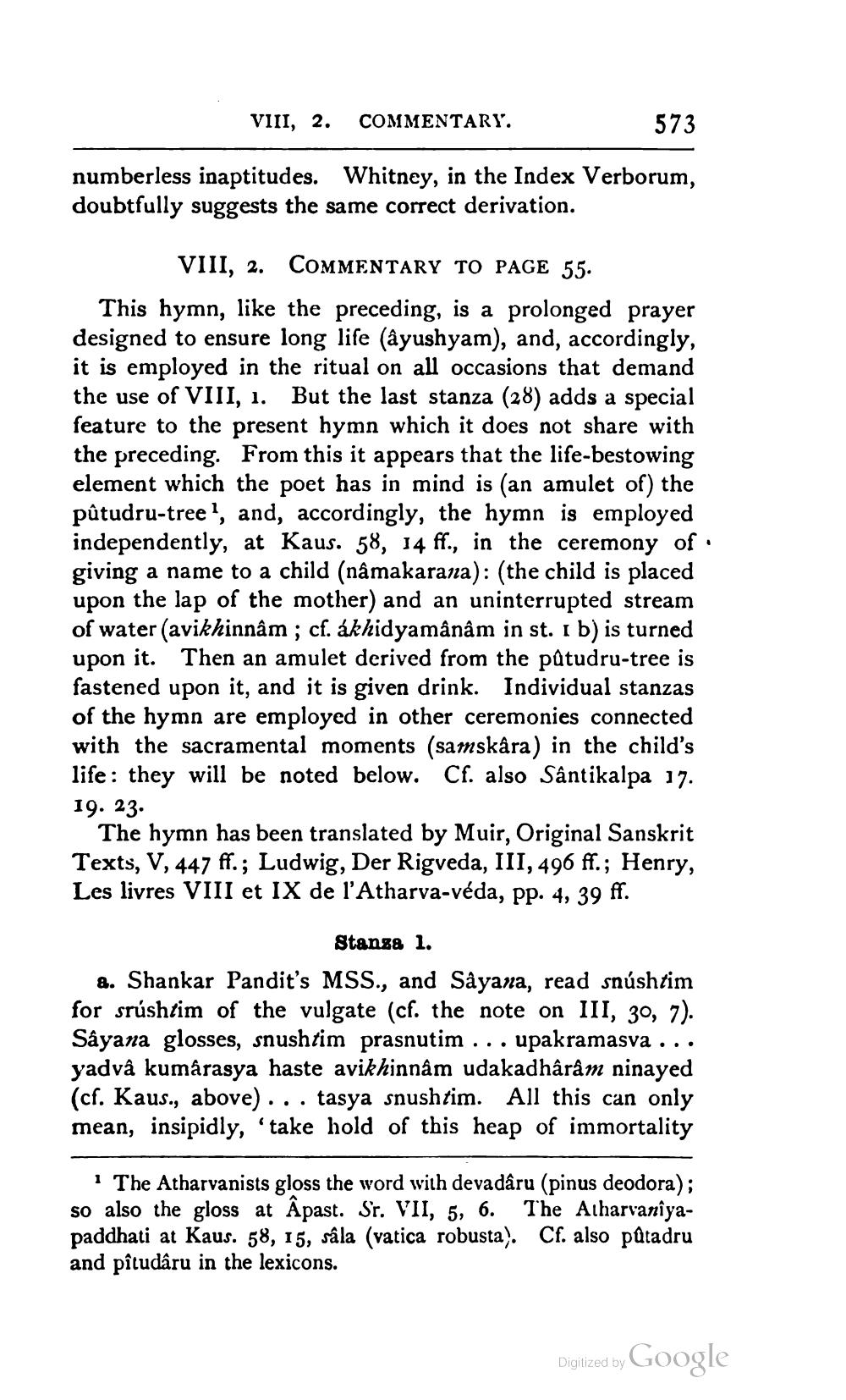________________
VIII, 2. COMMENTARY.
573
numberless inaptitudes. Whitney, in the Index Verborum, doubtfully suggests the same correct derivation.
VIII, 2. COMMENTARY TO PAGE 55. This hymn, like the preceding, is a prolonged prayer designed to ensure long life (@yushyam), and, accordingly, it is employed in the ritual on all occasions that demand the use of VIII, 1. But the last stanza (28) adds a special feature to the present hymn which it does not share with the preceding. From this it appears that the life-bestowing element which the poet has in mind is (an amulet of) the pûtudru-tree, and, accordingly, the hymn is employed independently, at Kaus. 58, 14 ff., in the ceremony of giving a name to a child (nâmakarana): (the child is placed upon the lap of the mother) and an uninterrupted stream of water (avikhinnâm; cf. ákhidyamânâm in st. I b) is turned upon it. Then an amulet derived from the patudru-tree is fastened upon it, and it is given drink. Individual stanzas of the hymn are employed in other ceremonies connected with the sacramental moments (samskâra) in the child's life: they will be noted below. Cf. also Sântikalpa 17. 19. 23.
The hymn has been translated by Muir, Original Sanskrit Texts, V, 447 ff.; Ludwig, Der Rigveda, III, 496 ff.; Henry, Les livres VIII et IX de l'Atharva-véda, pp. 4, 39 ff.
Stansa 1. a. Shankar Pandit's MSS., and Sảyana, read snúshtim for srushtim of the vulgate (cf. the note on III, 30, 7). Sâyana glosses, snushtim prasnutim ... upakramasva ... yadvâ kumarasya haste avikhinnâm udakadhârâm ninayed (cf. Kaus., above)... tasya snushtim. All this can only mean, insipidly, 'take hold of this heap of immortality
1 The Atharvanists gloss the word with devadâru (pinus deodora); so also the gloss at Âpast. Sr. VII, 5, 6. The Atharvanîyapaddhati at Kaus. 58, 15, sâla (vatica robusta). Cf. also pútadru and pîtudâru in the lexicons.
Digized by Google




